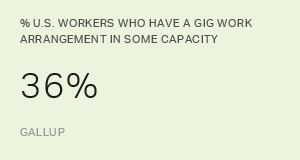Story Highlights
- Key experiences are necessary for leaders to grow and develop
- Defining key experiences by role is possible
- Aid in development by providing leaders with experiential coaching and guidance
Senior leaders know that leadership development is crucial. And many admit, sotto voce, that their companies' development opportunities and programs are insufficient.
It's not for lack of trying. Companies spend top dollar on leadership development courses -- $14 billion in the U.S. alone. Many companies claim to use the 70-20-10 approach to leadership development: 70% should be experiential, 20% relational and 10% coursework and training.
There's real value in that, but Gallup finds an alarming deficit in the experience piece. Too few programs can clearly define the experiences that lead to excellence in leadership; they don't individualize, they can't match leader to experience at the time it's most needed, and they don't help leaders analyze their experiences so they can effectively apply them in the future.
In an increasingly uncertain business environment, exposing leaders to real challenges and testing their mettle in real business situations is key. First, however, they should know which experiences they need. And some experiences are more valuable than others.
So, What Makes a Key Experience?
Key experiences are events in a leader's life that result in learning, growth and/or increased capacity to effectively lead. Gallup has worked with many organizations to define such key experiences.
While the key experiences that matter are specific to roles and vary by organization, the following stand out as the most important, all over the world:
- working on stretch assignments and out-of-expertise projects
- turning around a failing business or product
- navigating a new culture, new country or a previously uncharted customer segment or technology
- expanding technical capability significantly -- specifically skills that enhance agility and digital readiness
- leading a cross-functional team on a mission-critical organizational project
- experiencing failure and learning from it
- actively building a network of supporters that led to significant gains for the organization
A variety of experiences are essential to achieving broad and balanced development. Experiences that create a significant difference in a leader's growth are breakthrough experiences. Crucible moments. These sometimes transformational experiences reset how leaders view their work and their lives. These could be professional or personal. Unfortunately, no classroom experience can provide this same level of learning. But timing is everything, and early exposure to experiences is key.
For instance, Gallup's research on leadership success shows that learning from failure is a critical leadership experience. Because actual failure is risky and difficult to control or predict, some organizations try to substitute case studies. They're instructive, but an inadequate replacement for real-time, real-world exposure to challenges.
It is an authentic challenge and the consequences associated with that experience that drive the learning forward and make an experience developmental. Those lessons can have a lasting impact on how a person manages and leads.
For instance, one Gallup client is the CEO of a bank. Though he had a successful career leading operations, he wanted to apply his strengths in other areas of the business -- and learn what he could -- by taking a sideways step into HR. He later returned to operations and eventually became CEO. His time in HR taught him the people side of business, which was an extraordinary opportunity to gain experience and an understanding of human capital strategy.
He had the opportunity to take advantage of necessary experiences when they were most beneficial to him -- but not every leader is so fortunate, and no business should let fortune dictate development. It's much more effective to determine the development experiences that an individual needs and set a course to obtain them.
How to Define and Assess Key Experiences
A key experience inventory helps organizations identify the events that are essential to senior leadership success in that company, thereby closing developmental gaps and maximizing their chances for future success.
- Start by first reviewing the key experiences required for your organization to meet its strategic goals and aspirations.
- Assess how the role is evolving and imagine what will be demanded of it three to five years from now. Technology and environmental changes disrupt roles and responsibilities -- what will the leader and the organization need down the road?
- Understand the experiences that have helped your best leaders succeed.
- For key high-potential leaders, identify experiential gaps and bridge those gaps to accelerate leadership growth.
Remember, talent is an accelerator. Regardless of the experience, talent helps leaders make more of what they will learn from it. In fact, Gallup research shows that those hired from the top 20% of candidates based on a scientific assessment are better performers who achieve higher profitability, productivity and key business outcomes such as sales and increased employee retention.

While talent always amplifies performance, the ability to use it to capitalize on disruption -- or more particularly, disruptors -- is increasingly valuable and takes authentic practice and repetitions to develop. AI, robotics and the gig economy will require leaders to operate in a remarkably agile and ever-changing business landscape, different from any that came before it. And the demands of leadership in that environment will only grow more intense.
Dusting off old leadership training manuals and lecturing on outdated management and leadership philosophies will hardly develop the leaders you need. Businesses need agile and "digital ready" leaders.
Unfortunately, the key experiences for this form of leadership are ill-defined, and the traditional training and relational aspects of leadership development are insufficient alone. They focus mostly on digital skills rather than the ability to navigate an increasingly complex business and economic climate in an increasingly globalized world.
Opportunities for Growth
Moreover, career growth is not linear. Many leaders climb to the top of the career ladder only to find it was leaning against the wrong wall. Key experiences may feel like detours, but they can teach leaders something important.
For that reason, Gallup research indicates that good development programs define key experiences, as well as offer targeted classroom-style coaching, reviews and planning. An approach with the following elements of experiential development offers a broader perspective as well as allowing for deeper introspection:
- Coaching: Key experiences are an excellent input for effectively coaching emerging leaders. Along with helping leaders understand the key strengths, engagement and performance orientation, coaching leaders on key experiences would be invaluable.
- Talent reviews and succession planning: Incorporating key experience data into talent reviews provides great insight on which experiences will support the greatest application of a high-potential leader's talent. A deep review of the high-potential leader's key experiences can provide important feedback on their readiness levels. These are valuable inputs for career management that introduce detours and diversions that greatly enrich their long-term career development.
- Individual development planning: Very specific and individualized learning and developmental goals built around key experiences help leaders find meaning in their experiences and apply the lessons learned. It also helps them identify their own experiential gaps. Leaders should think carefully about the wall they lean their career ladder against, their own innate talents and their weaknesses, too.
If more companies offered leaders the right kind of experiential development programs, the effect spans much farther than the individual leader. Currently, global engagement is only at 15%, 51% of U.S. employees say they're actively looking for a new job, 35% of U.S. employees have changed jobs within the last three years, and 91% of them left their company to do so.
And the single biggest reason why employees leave, according to Gallup, is their inability to do what they do best. That applies to leaders, too. Leadership development is about opportunities -- and not the opportunity to sit in a training session. Rather, the opportunity to truly learn, plan a trajectory and grow. Experience is a big part of effectively leading, and experience is what makes up a career -- and ultimately a company.



